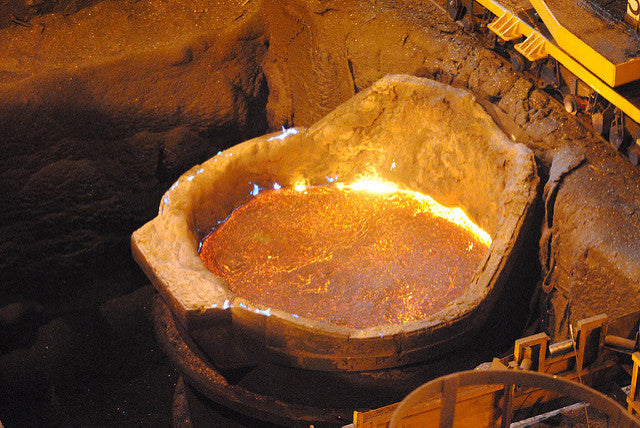Your Cart is Empty


Heat treatment is an important step in the process of forging steel swords. It's used to strengthen the blade and increase its Vicker's Hardness rating.
To better understand the importance of heat treatment in steel swordmaking, you need to understand the composition of steel. Steel is essentially a combination of iron and carbon. When mixed together at the right ratio, it creates an alloy that can hardened. However, raw steel is soft due to the uneven distribution of these carbon molecules. To overcome this issue, swordsmiths heat the steel so the carbon molecules spread more evenly throughout the blade.
Traditional Heat Treatment
The exact method for heat treating steel swords varies depending on many factors, including the specific type of steel, the sword, and the tools being used. However, it typically involves heating the metal until it loses its magnetic properties and then cooling it, either by quenching it in water, oil, or by exposing it to air.
Next, the swordsmith must heat the blade to roughly 450 degrees Fahrenheit, after which he or she can temper it to reduce brittleness and improve its durability. This step is critical, as newly heat-treated steel breaks easily due to stress. A swordsmith may reheat the blade to 350-1400 degrees Fahrenheit, depending on the type of seel.
Differential Heat Treatment
Also known as selective heat treatment or local heat treatment, differential heat treatment is another common way in which swordsmiths heat steel blades.
Conventional European swordsmiths perform heat treatment by quenching the entire blade in water or oil. Japanese swordsmiths, however, use differential heat treatment, which differs in the sense that layers of clay are applied to the blade before heating. The clay creates a barrier over the blade itself, allowing the metal to quickly cool for maximum hardness on the edge. The swordsmith applies a thicker layer of clay to the rest of the blade (not the edge), allowing it to cool more slowly. The end result is a softer yet more resilient steel that's able to withstand high levels of stress without breaking.
Japanese swordsmiths prefer differential heat treatment because many of their swords have a single cutting edge. This method leverages the power of this design by strengthening the non-cutting edge of the sword so it reinforces the cutting edge on the opposite site. Historically, European swordsmiths have avoided the use of clay in their heat treatment methods, instead quenching the bare blade with water or oil.
Photo Credit: Clint Budd